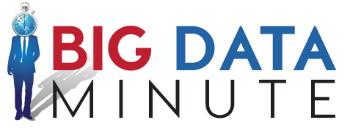
by Stephanie Rabinowotz | Dec 7, 2015 | Big Data, Creating Competitive Advantage
Imagine being able to go about your day and know that a computer is making you money. You don’t need to sit in front of it, you can go golfing or into the office and know that back home you are potentially scoring extremely valuable stocks. This is now being accomplished through trading algorithms.
Algorithms are a clear set of instructions telling a computer what to do and when to do it. Algorithmic trading is a new use of Big Data in finance. The theory behind algorithmic trading is that a computer is set up with algorithms giving defined rules and parameters on when to trade or sell. Computers can scan through stocks and pick out stocks that have dropped or risen in price to buy or sell at the precise time to ensure optimal earnings.
Through this process investors are learning how to rely on these algorithms to make trading decisions and act much quicker than any human can. Using computers also takes the human emotion element out of the equation, leaving objective data to make decisions. Although this sounds like an intriguing way to make money, one must also be very cautious when trusting a computer with their money. Investors are encouraged to learn coding to make their own customized algorithms and systems that have set perimeters and conditions. This would be the only way to securely trade without a high risk of a possibly devastating malfunction.
This trading process is just another way Big Data is revolutionizing the financial industry. To learn other ways Big Data is influencing the Finance industry make sure you read Business Optimization, Customer Satisfaction and ROI.

by Stephanie Rabinowotz | Dec 2, 2015 | Creating Competitive Advantage, Customer Satisfaction
The majority of adults indulge in the occasional glass of wine or beer, some more than others, but never the less liquor is a consistently successful industry. The issue is that there are so many players in the field that competition is constantly on the rise. With a continual stream of new products being released how can businesses set themselves apart to gain a competitive edge? How can businesses get more accurate and up to date feedback from their consumers?
When Big Data is used as an analytics tool it has proven to provide invaluable results. There is such a wide demographic of alcohol consumers that it becomes difficult to track consumer trends and acquire better marketing techniques. Big Data analytics can dig out the patterns in consumer trends and give the manufacturer feedback on where they need to improve to be more successful.
This insightful podcast reveals some great advice for beer and liquor vendors through using Big Data as a tool to better manage development as well as customer satisfaction!
Check out this podcast and learn how liquor vendors and manufacturers can take the lead against competition and up their annual sales!

by Rich Benvin | Aug 26, 2015 | Big Data, Case Studies, Creating Competitive Advantage
Many companies come up with a great ideas that they know will help a particular industry, but then struggle to formulate a plan to access and acquire customers in the new market. Cliintel is comprised of experts with diverse expertise in a wide variety of fields that can be quickly leveraged by our clients to ensure their successful entry into new markets and industries.
The Client:
A leading innovator in the Radio Frequency Identification (RFID) business had been working with a diverse client base that ranged from aerospace to the medical industry. They had recently identified the retail vertical as a potential new market for their products.
The Business Issue:
The primary use of RFID technology is for inventory tracking. The client wanted to broaden their reach by using their software solution to solve issues within the retail space. They had built a solution to track the relationships of products within a store location, providing real-time data on customer behavior and interaction with the products. The problem was trying to identify a client who would be willing to “beta-test” to validate the benefits from the solution and provide references.
Cliintel’s research enabled the client to complete product development ahead of schedule and successfully enter the retail market by successfully implementing their solution in record time while simultaneously acquiring new, referenceable customers.
The Approach:
Cliintel took a broad view of the retail industry, looking for beta-test candidates with needs that aligned with the primary uses of the RFID technology and who would realize value from the innovation. The industry was examined collectively and objectively to identify specific candidates who prioritized relationship marketing performance metrics, had large supply-chains and were targeting both internal and external loss-preventions programs.
Cliintel’s research enabled the client to complete product development ahead of schedule and successfully enter the retail market by successfully implementing their solution in record time while simultaneously acquiring new, referenceable customers.
The Solution:
Cliintel presented three key retail venues that they felt would benefit most from the client’s solution. Specific requirements for the solution were identified for each venue – ranging from pure inventory tracking to relationship marketing. After quickly conducting extensive market research, Cliintel identified specific companies that needed an inventory solution and possessed the willingness to participate in the beta-test.
The Project Results:
Cliintel’s research enabled the client to complete product development ahead of schedule and successfully enter the retail market by successfully implementing their solution in record time while simultaneously acquiring new, referenceable customers.
We’re proud to help our clients solve tough problems and achieve stunning results. To see what kind of big data results Cliintel.com can deliver for you, please Call 720-200-3001.

by Bill Decker | Aug 5, 2015 | Case Studies, Creating Competitive Advantage
Process Redesign and Software Enhancements Reduces Operating Expenses
Customer service is critical for the success of most companies. But it comes at a cost. For a leading provider of industrial-strength hardware, software and services this cost had become inordinately high due to a business decision to “give service” or support to customers regardless of entitlement. Cliintel was asked to assess the situation, create new processes to correct the problems in the software which had been developed for the European/Middle East and Asian (EMEA) markets, and then to oversee its deployment in the Americas.
The Client:
The Client is a leading provider of industrial-strength hardware, software and services that power the internet with installations in more than 100 countries.
The Business Issue:
The client had reached an impassable situation. During a period of quick expansion, both the database available to the call center representatives and the tools needed to verify customer entitlement for services contained significant inaccuracies. In an attempt to address these issues, the client created a policy of providing unnecessary service to assuage customers and attempt to maintain customer retention. The customers soon became accustomed to contacting the call center and simply demanding service which often resulted in a technician being dispatched to their location to resolve issues. This practice was barely maintaining customer satisfaction levels, but was creating unnecessary costs in excess of $4 million per quarter.
The company needed a solution to the systemic problems of inaccurate customer information. In other words, the client needed a tool that would quickly and accurately determine the entitlement status for any given customer 24×7, 365 days a year as well as provide an action plan for correcting, uplifting or abandoning customers who were out of their warrantee or support period.
The project was completed under budget, within the 45 day schedule, with the client realizing a savings of $4 million in the 1st quarter, eliminating the unnecessary costs previously being incurred.
The Challenge:
The client database mining algorithm had been developed in the EMEA markets for the purpose of handling such a problem. The challenge was to deploy this tool in the Americas, where the customer base was 25 times the size of the EMEA markets currently using the tool, with a deadline looming in 45 days.
The Solution:
The solution was to gather stakeholders, agree upon a level of service and negotiate with the Sales and Service Delivery organizations on an acceptable response time for corrective action. Then they could proceed to development to rapidly enhance the EMEA product for the Americas and deploy it in 45 days.
Due to the incredibly short deadline Cliintel employed a strategy to break down the processes into manageable units. A Rational Unified Process (RUP) model was used to complete the development of the enhanced software, followed by a Change Acceptance Process (CAP) developed with the stakeholders to ensure a smooth and efficient transition to deployment.
The Project Results:
The project was completed under budget, within the 45 day schedule, with the client realizing a savings of $4 million in the 1st quarter, eliminating the unnecessary costs previously being incurred.
We’re proud to help our clients solve tough problems and achieve stunning results. To see what kind of results Cliintel can deliver for you, please visit www.cliintel.com or e-mail askcliintel@cliintel.com.

by Rich Benvin | Aug 4, 2015 | Case Studies, Creating Competitive Advantage
Through an aggressive merger and acquisition phase, one of the broadband industries largest Multi-System Operators (MSO), found themselves needing help in systematically migrating their subscriber billing and workforce automation systems. To reach this goal, the client enlisted the help of experts at Cliintel to both maintain service levels as well as improve efficiency in the field.
The Client:
The MSO was the world’s largest provider of cable television, high-speed internet and local telephone service to 14 markets across the United States.
The Business Issue:
The Atlanta market consisted of over 100 dispatchers and over 500 technicians, all serving 600,00+ subscribers. This market utilized multiple groups of contractors to assist in field installations, service and audit functions. Atlanta was also the last of nine markets to be on an older, outgoing Workforce Management tool. Severe contractual penalties were associated with an extensive data center being kept on-line to support these tools. If the system was not shut off within 60 days from project initiation, the previously pro-rated cost to the market would exceed $1 million a month. The problem was particularly precarious in this case because the Atlanta market division of the MSO was highly dependent on the outgoing system that was actively utilized by the routers, dispatchers and field technicians.
Due to the success of this migration, increases in the efficiency of in-house labor allowed for the reduction of contract labor, allowing the MSO to realize an immediate profit of over $5 million, with a gross savings of over $300,000 in the first 90 days.
The Approach:
The Atlanta market’s staff had grown accustomed to change and transition. The decision to utilize Cliintel was based upon the team’s ability to execute the project plan utilizing the best practices identified from lessons learned from the prior deployments to successfully overcome the risks and issues brought to bear during the implementation. The urgency to sunset the old system and avoid the associated costs was extreme, mandating that the deployment of the new solution be on time, on budget, and fully available in production. It also had to be deployed with performance
reporting and cost/benefit trending analysis capabilities.
The Solution:
Discovery meetings were held by the project team to gather information from the market’s staff, vendors and management. The meetings engaged upper management in making high-level decisions on configuration, and to gain buy-in. Meetings between upper and middle management were held to assess criteria for these two levels and to achieve goal alignment between upper and middle management. Finally, meetings were held with front-end users and supervisory staff.
The goal of the meetings was to properly size the level of effort required to deploy the work force automation platform into this system across the four key departments: routing, dispatch, field technicians, and administrative.
Normally, training was held in a phased format utilizing one team of trainers to work through each department. In this instance, training was required in parallel in a “just-in-time” fashion. This approach required exacting coordination between the project management staff, market staff from dispatch, routing and field supervisors and both the corporate and market training staffs. Coordination would also have to occur in parallel with the wireless hardware and service provider, as well as the vendor for the work force automation platform itself.
The field, including that day’s routing, dispatch and all phone, radio and internet communication, would have to make a hard cut from the old workforce automation system, cellular phone and radio, to one handheld device in the same day. Technicians would hand in their hand held device on their way into training and leave to deliver their portion of the day’s production, with a new handheld device, having been qualified as proficient – all in the same shift.
The Results:
Cliintel was highly successful in coordinating the entire span of this endeavor and moved from field service to implementation and utilization by the network maintenance and outage dispatch teams. The rapid implementation schedule throughout the affected departments, and fast utilization of the handheld devices were attributable to unwavering executive sponsorship with consistent reinforcement. Logical, focused processes helped to achieve buy in, goal-alignment, and participation in training and meetings where the players were able to see the commitment from upper management. If resistance was noted, issues could be addressed on the spot and be immediately resolved.
The solution was deployed on time and under budget. All departments were successfully using the new system on day one. The outgoing product was smoothly replaced and the client was able to shut down the data center without incurring the $1 million per month penalty.
Due to the success of this migration, increases in the efficiency of in-house labor allowed for the reduction of contract labor, allowing the MSO to realize an immediate profit of over $5 million, with a gross savings of over $300,000 in the first 90 days.
We’re proud to help our clients solve tough problems and achieve stunning results. To see what kind of results Cliintel can deliver for you, please visit www.cliintel.com or e-mail askcliintel@cliintel.com.

by Richard Batenburg | Jul 2, 2015 | Business Optimization, Creating Competitive Advantage
Change management can be a difficult process for even the most seasoned leader. Executives rise to positions of authority by solving problems, and their approach to change management may reflect that impulse: identify a solution to a given problem, assemble the staff, and share plans for the new process, emphasizing bottom-line benefits. While this is a logical plan of attack, it may not account for the many human concerns that come into play when significant change is at hand.
There is a better way to approach change management, and it doesn’t involve ordering copies of “Who Moved My Cheese?” for all employees. Effective communication will help you promote change more effectively and keep pain to a minimum. Key points to consider when contemplating change management include:
Communicate early and often: Team members focused on their day-to-day responsibilities may not be aware of a problem that is apparent to management, or may simply accept it as part of the status quo. In such cases, solutions often appear to be change for the sake of change. By socializing the existence of the problem and soliciting ideas and feedback from those who will be affected, management will ensure that the team understands the need for action and is invested in decision-making. It may be especially valuable to bring in a skilled change management consultant who can address issues from an unbiased perspective and ask critical questions that employees may prefer to sidestep.
Communicate with your ears: Once the decision has been made and communicated, company leaders are much more likely to turn change opponents into proponents if they actively listen and respond to the concerns of those most impacted. Two-way discussion and communication are essential ingredients of successful change management.
Communicate the big picture: When a change must be made, it may not be feasible or appropriate to involve everyone in the necessary decisions. In such situations, effective change management depends on clearly explaining why the decision is being made and what impact it will have. Team members are concerned with customer experience, product quality, and employee satisfaction as well as the bottom line. That means leadership must address the impacts on all areas of the company. Presenting the effects of the change honestly and as positively as possible will help team members understand how the change impacts the company as a whole. In large organizations, members of one work group frequently do not understand how their activities relate to others. Seeing the big picture will help them become active change management participants.
Communicate the little picture: Employees are more likely to embrace and contribute to successful change management if they receive honest information about the direct impact the changes will have on their activities, work relationships and pocketbooks.
In the digital age, our paradigms are shifted, our cheese moved, and our concept of reality altered on a daily
basis by relentless technological, societal, and business change. This can be overwhelming, and even the most
dedicated employee may wonder whether he or she really needs to adapt to every disruption that comes along. Truly
successful change management requires that companies help employees and customers understand change, accept
it and thrive in today’s dynamic business environment.
To learn more about change management, please e-mail askcliintel@cliintel.com.












Recent Comments